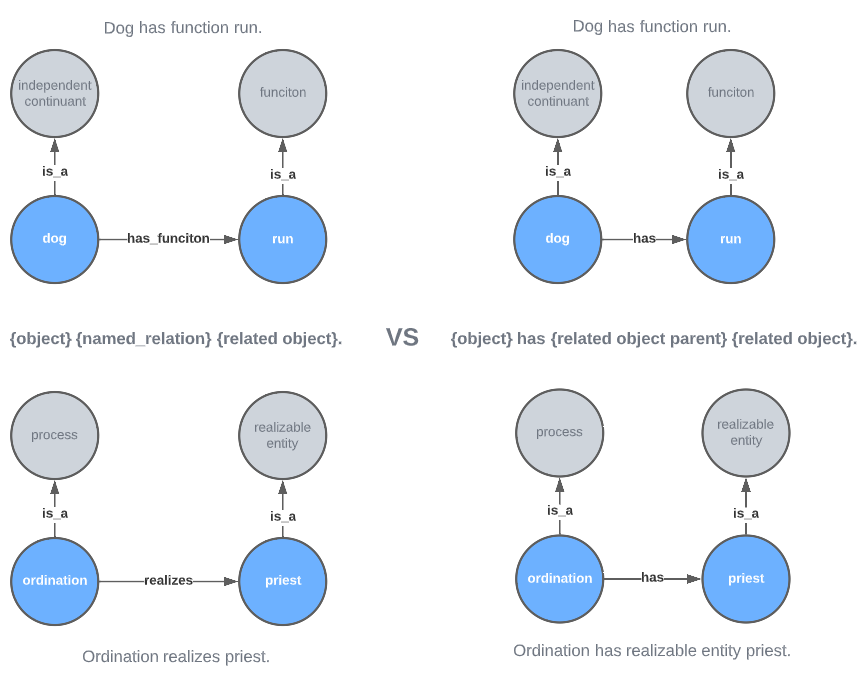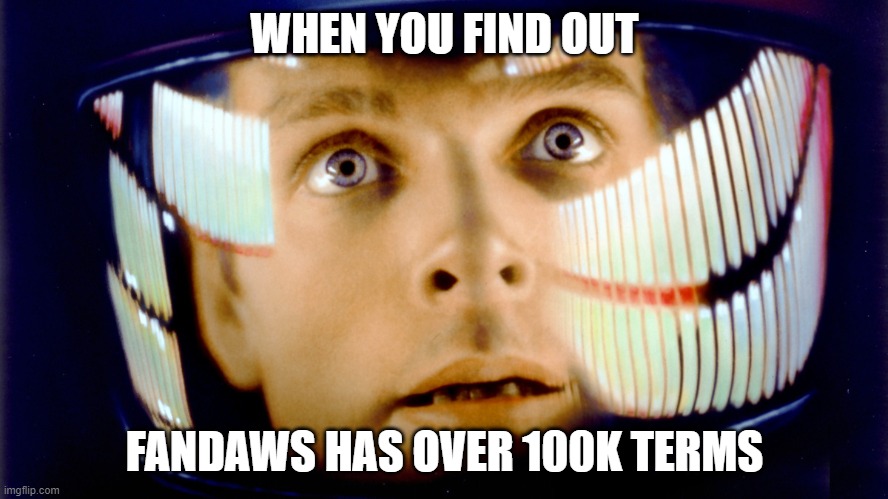All About Fandaws
What is Fandaws?
The Fact and Answer Web Service (Fandaws) is an Ontology Building Service (OBS).
Ontology is a model of reality-based in the branch of philosophy Ontology. Fandaws uses the upper Ontology BFO as the backbone of Fandaws' ontological model.
How does Fandaws work?
Fandaws accepts the input of a Term or Term Phrase from a user. Fandaws will either recognize the term and output the fact of the term (what that term IS) or it will output a question to the user to attempt to determine what the term is.
Once a term is recognized Fandaws will place the term in an Ontology that Fandaws builds in a logical position based on all the information Fandaws knows at that time. Over time as Fandaws learns new facts, the Ontology will grow and change.
How do I use Fandaws?
Input the term you would like to discuss (no sentences just the term. for example cat) and Fandaws will ask you what IS the term. Examples: Cat is an animal. Bread is a food. Table is a furniture.
Don't worry if your, not 100% sure what the term is just do the best your can, Fandaws will sort it out.
If Fandaws knows what the term is Fandaws will tell you what the term is. You can either agree or disagree with what Fandaws says.
If you want to stop the conversation input :end and Fandaws will reset to the start of the conversation.
What is the purpose of Fandaws?
Ontology is a powerful tool to help humans understand and reason about reality. Due to the ignorance of Ontology by many people and the complexity of building Ontologies this tool is inaccessible to many. By creating a simple digital tool that builds Ontologies through natural conversations we hope to make ontologies and the benefits of using them accessible to everyone.
We hope that in the future the expansive crowd-sourced Ontology created by Fandaws will be used by AI to better communicate with humans and help humans reason.
📜 Licensing Notice
Fandaws is free and open-source software.
It is released under the MIT License, which means:
- ✅ You may use it for any purpose — personal, academic, or commercial.
- ✅ You may copy, modify, and share it freely.
- ✅ No permission is needed.
- ✅ Attribution is appreciated but not required.
- ⚠️ Fandaws is provided “as-is” with no warranties. I cannot be held responsible for any issues, errors, or damages that may result from its use.
In other words: use it however you like, but at your own risk.
version 2.1
Taxonomies, Ontologies, and Smarter Artifacts
With this release, Fandaws brings more power and clarity to your ontology work:
- SKOS-formatted Taxonomy - Export your hierarchies directly in SKOS, making them interoperable with knowledge management tools, search platforms, and linked data ecosystems.
- Turtle Ontologies (BFO + FAN style) - Generate ontologies in widely adopted Turtle format, aligned with both the rigorous Basic Formal Ontology (BFO) and the simplified, flexible FAN style for different use cases.
- Cleaner Artifacts - Smarter generation and catching ensure your outputs are more accurate and consistent, reducing cleanup and manual rework.
Please note: updates may take longer to propagate into the full ontologies. This tradeoff ensures higher stability and quality—you can have it fast or current, but not both at once.
version 2.0

Fandaws is now a complete Ontology Building Service with the addtion of the new HAS Relationship . Unlike many other formal ontologies, Fandaws holds only TWO relationships IS_A (being) and HAS (possession). The IS_A relationship gives us classes and subclasses. The HAS relationship can join all other nodes creating any relationships.
Many ontologies will maintain relationships like "has_color", "has_funciton", "realizes", etc. This desire to enumerate and control unique relationships comes at the cost of management and extendability. We believe that all of these "other" relationships roll-up into a single type, possession and that by reducing it to a single relationship we maintain NO information loss and gain infinite extendability.
Take the simple examples above by replacing the "has_function" relationship with "has" what is lost? We still know the vertex, adjacent vertice, and path. If you need to know "what type of relationship" find the parent of the adjacent vertice.
To build relationships tell Fandaws about your subject in simple Subject Predicate Object phrases like, "A dog has a tail.", "Bakers bake bread.", etc. then answer Fandawses questions.
These new relationships now allow us to construct Schemas and Ontologies, using the Schema and Ontology Services. Both services and Validated and importable to tools like Protege. Simple go to Fandaws Services to check it out.
version 1.3

Fandaws has been pointed to various online dictionaries and has successfully processed over 100 thousand terms. This experiment validates the rules engine for Version 1 and will mark the start of Version 2.
Soon you can look forward to the ability to add properties to a node and new services like Skema Service and Ontology Service. Simple go to Fandaws Services to check it out.
version 1.2
Introducing Fandaws Services, an easy way to get ontologically enforced Definitions and Taxonomy. Enter the term you are looking for to get a definition or enter a term and UUID to see a terms taxonomy. (JSON format)
version 1.1
A simple Natural Language Processor (NLP) has been put in front of fandaws to better decipher term phrases from article terms like a, an, and the. In addition to deciphering articles users can now input the statement "A X is a Y." and Fandaws will know your intent.
The limitations of NLP have added limitations to the terms in fandaws. This is NOT ideal but a fair trade-off for the benefits of an NLP. For example, the NLP assumes that the term "glasses" are the plural of "glass" and therefore Fandaws can never know that "glasses", a type of eyewear exist.
version 1.0
Fandaws version 1.0 has only one relationship IS_A that defines what something is and therefore what the TYPES and SUBTYPES of things are. This is an essential part of any ontology but incomplete.